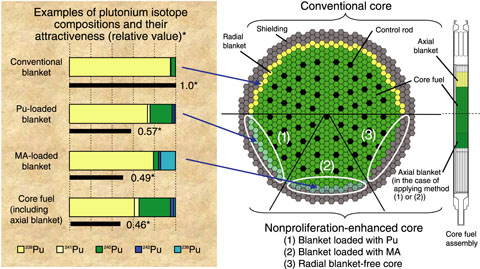
Fig.1-4 Core design methods to enhance the nonproliferation characteristics of the commercial FBR in terms of a material barrier
Plutonium (Pu), used as the core fuel of a fast breeder reactor (FBR), consists of around sixty to seventy percent fissile isotopes (239Pu, 241Pu), and the remainder are fertile isotopes ( 240Pu, 242Pu, 238Pu); this kind of Pu is called “reactor grade. ” At the same time, in the blanket surrounding the core fuel, uranium is converted into higher grade Pu than reactor grade, in which the proportion of fissile isotopes is more than ninety percent.
As measures in response to concerns about nuclear proliferation due to higher grade Pu, the rigorous safeguards by the International Atomic Energy Agency (IAEA) and the like and the physical protection of nuclear materials essentially keep the system ’s proliferation resistance at a high level. Moreover, it is possible to keep the Pu products in the fuel cycle system at reactor grade by reprocessing the blanket together with the core fuel. Nevertheless, in a future commercial era when a number of FBRs are deployed, society may come to demand a more enhanced proliferation resistance level. As an example of a way to cope with that situation, we investigated a core design that reduces the attractiveness of nuclear material (that is, which prevents the production of higher grade Pu) while avoiding serious deterioration in core performance, fuel fabrication, fuel handling, and so on. As a result, the three methods (1) to (3) shown in Fig.1-4 were found to be feasible.
Method (1) is to load the blanket with Pu, whereupon the blanket becomes low-enriched fuel with Pu enrichment of 3~5%. No higher grade Pu emerges because from the outset the generated Pu is naturally mixed with the reactor grade Pu added initially. In method (2), minor actinide (MA) on the order of 2~4% produces 238Pu, the decay heat of which is considered to make a large contribution to nonproliferation characteristics. It should be noted that this method is subject to limitations in terms of the MA supply, because MA with low decay heat is necessary from the viewpoint of fuel fabrication and handling. After preliminary evaluation of the attractiveness of Pu for methods (1) and (2), it is foreseen that it is sufficiently possible to reduce the attractiveness of the nuclear material to the same level as core fuel.
Method (3) uses a radial blanket-free core that is made possible by modifications of the core fuel specifications to maintain breeding performance. Method (1) or (2) can be applied to the axial blanket if necessary.
Any of these methods can be expected to enhance the nonproliferation characteristics with respect to the isotope composition of Pu while satisfying the performance requirements of a commercial FBR. We are continuing our efforts to optimize the core concept in consideration of the merits and demerits of each method.